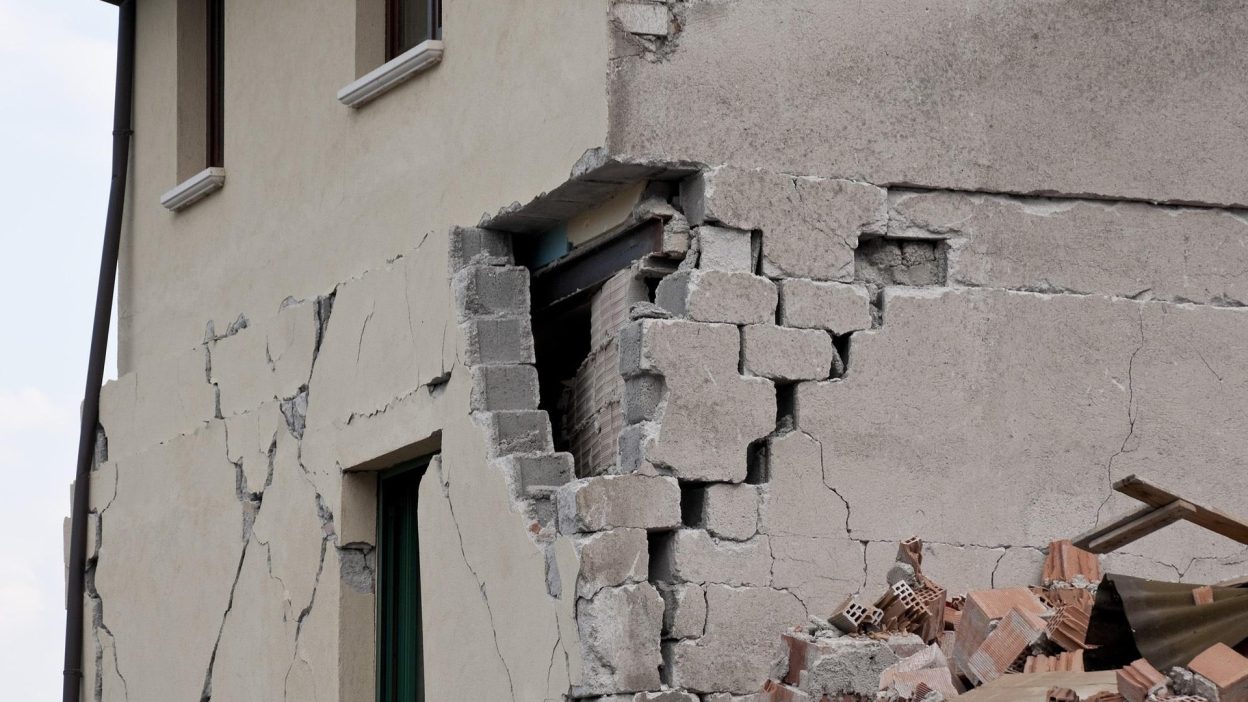Uncovering The True Cost Of The 1995 Great Hanshin Earthquake: What Japan Failed To Prepare For
The Great Hanshin Earthquake of 1995, also referred to as the Kobe Earthquake, left an indelible mark on Japan’s history. Striking at precisely 5:46 am on January 17, the earthquake rattled the city of Kobe and its surrounding areas. Measuring 7.2 in magnitude on the Richter scale, this natural disaster highlighted even the most advanced nations’ vulnerabilities. While Japan was often praised for its technological advancements, this event exposed major gaps in both its infrastructure and its approach to disaster management.
Kobe, one of Japan’s largest and wealthiest cities, became the epicentre of the destruction. However, the extent of the damage was not solely a result of the earthquake itself. Rather, a combination of outdated infrastructure, urbanisation, and poor planning amplified the devastation. As Japan came to terms with the destruction, the nation was forced to re-evaluate its disaster response systems and its preparedness for such a catastrophic event. The lessons learned from the tragedy reshaped Japan’s disaster policies in the years that followed.
How the 1995 Great Hanshin Earthquake Altered Japan’s Disaster Preparedness Forever
The events surrounding the 1995 earthquake were not just about physical destruction, but about how the disaster reshaped Japan’s approach to managing natural threats. While Japan was recognised for its advanced earthquake prediction technologies, the scale of the destruction far surpassed expectations. Even buildings designed to be earthquake-resistant were devastated, and vital infrastructure such as bridges, railways, and highways crumbled under the pressure.
The quake revealed glaring weaknesses in Japan’s preparedness. Urban sprawl and inadequate building codes contributed significantly to the catastrophe. The country’s failure to take precautionary measures led to widespread damage. As the death toll continued to rise, the government and the public alike realised that their approach to disaster response was flawed, and drastic changes were needed to prevent future calamities.
The Harrowing Consequences: Deaths, Injuries, and Shocking Statistics of the 1995 Earthquake
- Casualties: Over 6,000 lives were tragically lost in the earthquake, with many fatalities resulting from collapsing buildings and fires.
The death toll would have likely been higher without Japan’s early warning systems, yet the destructive force of the earthquake proved too much for even the most prepared areas. Thousands of people perished, while entire families were left without their loved ones.
- Injuries: More than 40,000 individuals suffered injuries during the quake, and over 150,000 homes were severely damaged or destroyed. Many of the injuries were caused by collapsing structures and fires, which spread quickly across the city.
Medical services were stretched to their limits in the aftermath, and many survivors received minimal care as hospitals became overwhelmed with casualties. The scale of the destruction made it challenging to provide timely assistance to all those affected.
- Economic Impact: The earthquake caused approximately $360 billion in damage, marking it as one of the most costly natural disasters in recorded history. Infrastructure was obliterated, and the economy of Kobe, once a thriving hub, came to a halt.
The financial repercussions were felt for years after the event, with businesses struggling to recover, and the overall economy of the region taking a significant hit. The recovery process was a long and expensive one, leaving deep scars on the community.
Could the 1995 Great Hanshin Earthquake Have Been Prevented?
Although the Great Hanshin Earthquake was undoubtedly a natural disaster, it highlighted how the disaster’s impact could have been minimised or even avoided. Despite Japan’s technological prowess, the country was still unprepared for such a severe event. Many experts had warned that a major earthquake was likely in the region, but not enough was done to safeguard against it.
Leading up to the quake, the region’s infrastructure was already showing signs of being vulnerable. Older buildings, outdated materials, and insufficient disaster preparedness plans contributed to the scale of the destruction. With improved urban planning and stronger building codes, much of the damage could have been mitigated. Unfortunately, the authorities failed to act on these warnings, resulting in the catastrophic consequences witnessed on that fateful day.
The Infrastructural Failures Exposed by the 1995 Great Hanshin Earthquake
The devastation caused by the earthquake uncovered the significant flaws in Japan’s infrastructure. The city of Kobe, renowned for its economic significance, was filled with buildings and structures that had not been designed to withstand such an event. In particular, the older buildings and industrial zones suffered the worst damage, as they were constructed with outdated techniques and materials.
Critical infrastructure, including bridges, highways, and railways, was severely damaged or destroyed in the earthquake. Emergency response teams struggled to reach those in need due to the extensive damage to transport networks. The earthquake exposed Japan’s failure to update its infrastructure in preparation for such a disaster, leaving many areas vulnerable when the quake struck.
The Long-Term Psychological and Economic Impact of the 1995 Great Hanshin Earthquake
Beyond the immediate devastation, the Great Hanshin Earthquake had lasting effects on both the people of Kobe and the Japanese economy. The psychological toll was profound, with thousands losing their homes and their livelihoods, and many survivors struggling with trauma and grief in the aftermath. Mental health issues, including post-traumatic stress disorder (PTSD), became prevalent, as people were forced to rebuild their lives from the ground up.
Economically, the earthquake severely impacted Kobe’s business sector, disrupting industries and causing significant financial losses. The city’s infrastructure was in ruins, and the recovery process proved to be both slow and expensive. The economic repercussions were felt across Japan, as the country had to allocate resources for long-term reconstruction efforts. The true cost of the earthquake extended far beyond the immediate physical destruction, affecting the social and economic fabric of the region for years to come.
The 1995 Great Hanshin Earthquake: A Combination of Nature’s Wrath and Human Oversight
- Nature’s Role: The earthquake was a result of the natural shifting of tectonic plates beneath the region. As the Philippine Sea plate shifted relative to the Eurasian plate, it triggered a violent earthquake that caused widespread destruction.
However, the true impact of the earthquake was not solely due to nature. The failure to properly prepare for such an event, and the weaknesses in infrastructure and emergency response systems, made the disaster far worse than it needed to be.
- Human Oversight: While Japan had advanced technology to predict earthquakes, the country’s failure to update its infrastructure and disaster preparedness plans contributed significantly to the scale of the disaster. The lack of updated building codes and inadequate planning allowed for widespread destruction, amplifying the effects of the earthquake.
Japan’s failure to act on the warnings and to prepare the region’s infrastructure made the 1995 earthquake far more devastating than it would have been otherwise.
The Aftermath of the 1995 Great Hanshin Earthquake: Kobe’s Struggle to Rebuild
The aftermath of the earthquake left the city of Kobe in ruins, and its recovery process was a long and arduous journey. The city’s port, factories, and many commercial buildings were destroyed, significantly hampering Japan’s economy. The damage to infrastructure, particularly the port, was a crippling blow to the region’s economic output.
In spite of the widespread destruction, the people of Kobe demonstrated remarkable resilience. Over time, the city began its recovery, though the emotional scars of the event lingered for many years. The trauma experienced by survivors and the painstaking process of rebuilding the city both physically and economically took a toll. While Kobe eventually recovered, it would never be the same again, and the event left a lasting impact on Japan’s collective memory.
Lessons Learned and the Path Forward: How the 1995 Great Hanshin Earthquake Shaped Japan’s Future
The lessons learned from the 1995 earthquake were difficult but essential for Japan’s future disaster preparedness. Following the event, the country introduced more rigorous building codes, enhanced disaster management systems, and improved its early warning technology. The earthquake prompted not only Japan but also many other nations to re-evaluate their own disaster preparedness strategies.
Although the recovery process was painful and lengthy, Japan emerged stronger and more resilient. The earthquake underscored the importance of readiness, not only for immediate response but also in ensuring long-term recovery and reconstruction. The Great Hanshin Earthquake served as a reminder that while natural disasters cannot be prevented, their impact can be mitigated with proper preparation and foresight.
FAQs:
- How many people died in the 1995 Great Hanshin Earthquake?
- Approximately 6,434 people lost their lives, and 40,000 were injured.
- What was the economic cost of the 1995 earthquake?
- The damage amounted to an estimated $360 billion, making it one of the most costly disasters.
- What were the major problems with Japan’s response to the 1995 earthquake?
- The slow and ineffective response led to delays in rescue efforts and hindered aid distribution.
- How did the 1995 earthquake affect the city of Kobe?
- The city was left in ruins, with over 100,000 buildings destroyed, leaving many homeless.
- What changes were made in Japan after the 1995 Great Hanshin Earthquake?
- Japan revised its disaster preparedness, improved building regulations, and introduced better early warning systems.
References:
“Kōbe earthquake of 1995”
“25 Years after Disaster: Looking Back on the Great Hanshin-Awaji Earthquake”
“Outline of the Great Hanshin earthquake, Japan 1995”




